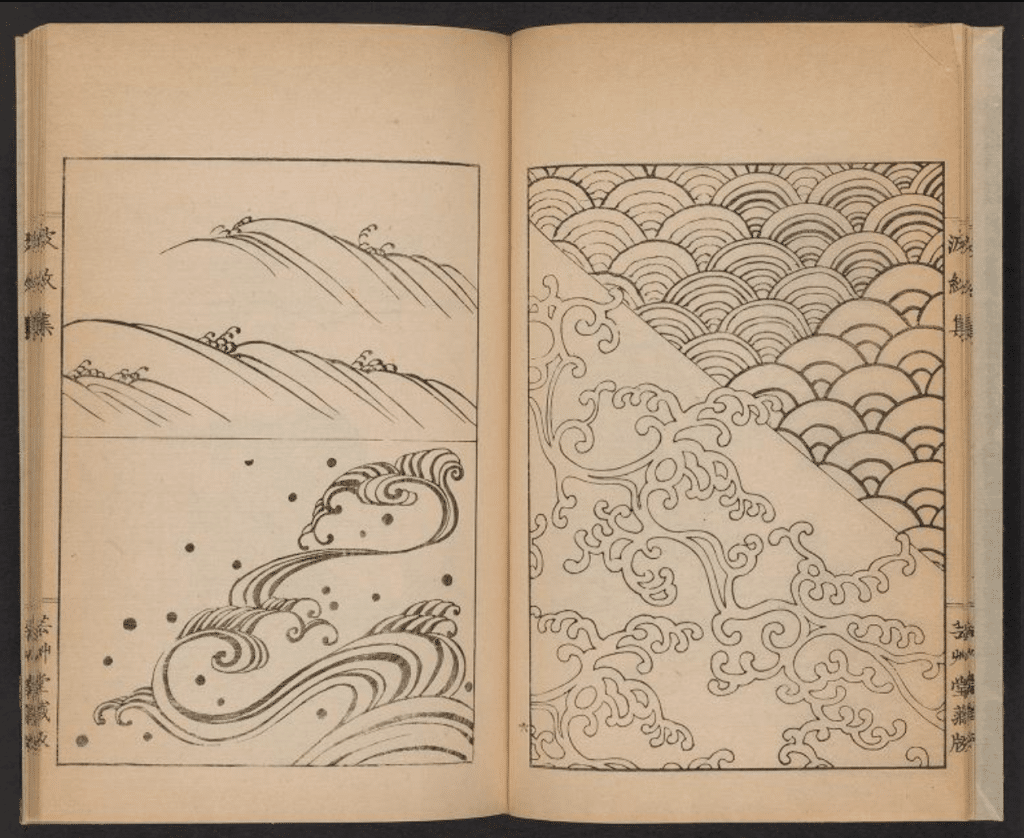Introduction
Japanese wave art, often depicted in ukiyo-e art, has a rich and multifaceted significance that spans centuries. These dynamic representations of waves serve as a window into Japan’s deep connection with nature, its cultural identity as an island nation, and the profound philosophy of impermanence. Let’s dive into the depths of this art form to understand its enduring appeal and relevance.
The Natural Symbolism of Waves
Nature’s Raw Power
Japanese wave designs encapsulate the raw power of nature, particularly the sea. Japan’s geography, with its extensive coastline and susceptibility to tsunamis, has fostered a deep reverence for the ever-changing and sometimes tumultuous seas. These designs celebrate the awe-inspiring force of nature itself.
A Symbol of Transience
One of the core tenets of Japanese culture and Buddhism is the concept of “mujo” or impermanence. Waves, in their perpetual motion and transient existence, embody this fundamental idea. Just as waves rise and fall, so too does all of existence.
Hokusai and “The Great Wave”
Hokusai’s Magnum Opus
The name Katsushika Hokusai is virtually synonymous with Japanese wave art. His woodblock print, “The Great Wave off Kanagawa,” is an icon of both ukiyo-e and Japanese art as a whole. This masterpiece features a colossal wave about to engulf fishing boats beneath Mount Fuji. It captures the sublime power of nature and the insignificance of humanity in the face of its might.

The Enduring Legacy
“The Great Wave” remains one of the most recognized and reproduced images in art history. Its influence on Western art, particularly on Impressionists like Claude Monet and Vincent van Gogh, underscores its enduring appeal. Hokusai’s genius lies in his ability to convey both the terrifying force and captivating beauty of the ocean.
Symbolism and Cultural Identity
Navigating Life’s Challenges
Waves, often used as backdrops in ukiyo-e prints, symbolize the challenges and uncertainties of life. Much like boats navigating rough seas, people must confront the ebb and flow of existence. This theme resonates deeply with the ukiyo-e ethos, which celebrates the fleeting beauty of the “floating world.”
Cultural Identity
Japan’s identity as an island nation is intertwined with its relationship with the sea. Waves serve as a symbol of this cultural identity, representing both the nation’s reliance on the sea for sustenance and its vulnerability to its powerful forces. Waves are not just an artistic motif; they are an integral part of Japan’s heritage.

Mori Yuzan and “Hamonshu: Waves of Japanese Design”
A Wave of Innovation
In the realm of Japanese art and design, the legacy of waves extends beyond the canvas of ukiyo-e prints. Mori Yuzan, a gifted artist and textile designer in the Meiji era (1868-1912) made waves of his own by creating a masterwork that redefined the concept of Japanese design. His three-volume series, “Hamonshu: Waves of Japanese Design,” is a testament to the enduring appeal of wave motifs in Japanese culture.
You can now download the entire collection in various formats for free courtesy of the Internet Archive.



Contemporary Expressions of Japanese Wave Art
Continuing Traditions
The legacy of ukiyo-e and Japanese wave art continues in contemporary expressions. Artists worldwide draw inspiration from these timeless motifs to create works that bridge the past and present. Examples of modern Japanese wave art can be found in various mediums, from digital illustrations to sculptures.

A Message of Resilience
In contemporary contexts, Japanese wave designs can symbolize resilience in the face of adversity. They serve as a reminder that, like waves, humans have the capacity to overcome challenges and adapt to change. These designs continue to offer a message of hope and endurance.
Conclusion:The Endless Appeal of Japanese Wave Art
Japanese wave designs in ukiyo-e and art at large serve as a profound testament to the enduring significance of nature, culture, and philosophy. From Hokusai’s iconic “Great Wave” to modern interpretations, these dynamic representations of waves continue to inspire, captivate, and convey timeless messages about the beauty and impermanence of existence. As we ride the crest of these cultural waves, we find ourselves immersed in a legacy that transcends time and resonates with the very essence of life itself.
Read More:
- The Most Expensive Ukiyo-e Art Sold at Auction: A Record-Breaking Journey of “The Great Wave”
- What You Should Know About Uehara Konen and Hatō zu
- 11 Things to Know About Collecting Japanese Screens
- Art of Time: Jaeger-LeCoultre’s Reverso Tribute Enamel Hokusai Collection
- The Rising Sun in Japanese Art and Culture
Take the first step towards your own Zen-inspired sanctuary by adding Japandi wall art to accentuate your style.

At the Art of Zen we have a wide selection of original Japanese style art prints in the ukiyo-e and Japandi style . Add some zen to your space with some art from the Art of Zen shop.




0 Comments